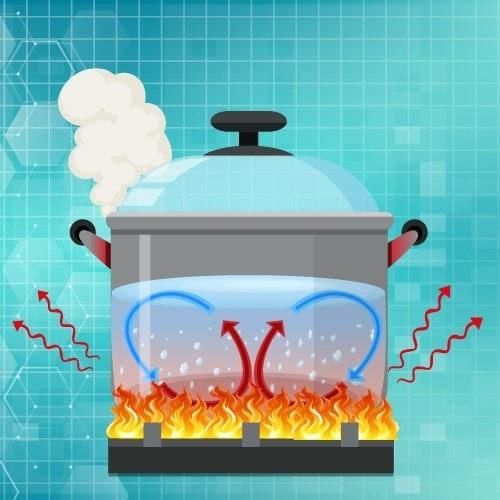Best Study Material for Mechanical Engineering Exam
Mechanical Engineering Exam > Mechanical Engineering Notes > Heat Transfer > Problems: Forced Convective Heat Transfer
Problems: Forced Convective Heat Transfer | Heat Transfer - Mechanical Engineering PDF Download
Frequently Asked Questions and Problems for Practice
| Q.1 | What is the local Reynolds number? |
| Q.2 | What are the important dimensionless groups in heat transfer? Explain their physical significance. |
| Q.3 | What is the difference between Reynolds and Prandtl anologies? |
| Q.4 | Explain why there is more heat transfer in forced convection as compared to natural convection. |
| Q.5 | What is Dittus-Boelter equation and when is it applied? |
| Q.6 | Water is to be heated from 50oC to 100oC in a smooth hot pipe. The pipe is maintained at a constant temperature above 30oC that of bulk water temperature under the condition of constant heat flux. Calculate the length of the pipe required for heating, if the tube diameter is 0.6 m and the Reynolds number of the water inside the pipe is 95000? |
| Q.7 | A tube bank having a square array of 100 tubes arranged in an in-line position is at 100oC. The diameter and length of the tubes are 15 mm and 100 cm, centre to centre tube spacing is 20 mm. Atmospheric air enters in the tube bank at 25oC and at the free stream velocity of 5.5 m/s. Determine the total heat loss by the tubes. |
| Q.8 | Water at 15oC flow past a sphere at the free stream velocity of 4 m/s. The diameter and temperature of the sphere are 30 mm and 70oC, respectively. Calculate the heat loss by the sphere. |
| Q.9 | Atmospheric air flows at 10 m/s of free stream velocity in a rectangular duct having dimensions of 25 cm by 50 cm. The air and wall temperature of the duct are 25 oC and 50 oC, respectively. Calculate the mean exit temperature of the air per unit length of the duct. |
| Q.10 | Air at 25 oC flows in a 10 mm diameter tube at a Reynolds number of 50,000. If the length of the tube is 100 cm, estimate the average heat transfer coefficient for a constant heat flux at the wall. |
The document Problems: Forced Convective Heat Transfer | Heat Transfer - Mechanical Engineering is a part of the Mechanical Engineering Course Heat Transfer.
All you need of Mechanical Engineering at this link: Mechanical Engineering
|
56 videos|78 docs|86 tests
|
FAQs on Problems: Forced Convective Heat Transfer - Heat Transfer - Mechanical Engineering
| 1. What is forced convective heat transfer in chemical engineering? |  |
| 2. How is forced convective heat transfer different from natural convection? |  |
Ans. Forced convective heat transfer is different from natural convection in that it involves the use of external forces to induce fluid motion, whereas natural convection relies on the density differences caused by temperature gradients to drive the fluid flow. In forced convective heat transfer, the flow rate and heat transfer rate can be controlled more precisely, making it suitable for many engineering applications.
| 3. What are some factors that affect forced convective heat transfer? |  |
Ans. Several factors influence forced convective heat transfer, including the velocity of the fluid, the temperature difference between the fluid and the surface, the physical properties of the fluid (such as viscosity and thermal conductivity), the surface roughness, and the geometry of the system. These factors determine the convective heat transfer coefficient, which quantifies the heat transfer rate.
| 4. How can forced convective heat transfer be enhanced in chemical engineering processes? |  |
Ans. Forced convective heat transfer can be enhanced by various methods, including increasing the fluid velocity, using heat transfer enhancement devices such as fins or turbulators, increasing the surface area available for heat transfer, and optimizing the flow geometry. Additionally, choosing a fluid with higher thermal conductivity or lower viscosity can also enhance convective heat transfer.
| 5. What are some common applications of forced convective heat transfer in chemical engineering? |  |
Ans. Forced convective heat transfer is widely used in chemical engineering processes. Some common applications include heat exchangers for heating or cooling fluids, cooling towers for removing heat from industrial processes, air conditioning systems for maintaining desired indoor temperatures, and reactors for carrying out chemical reactions at controlled temperatures.
Related Searches
























